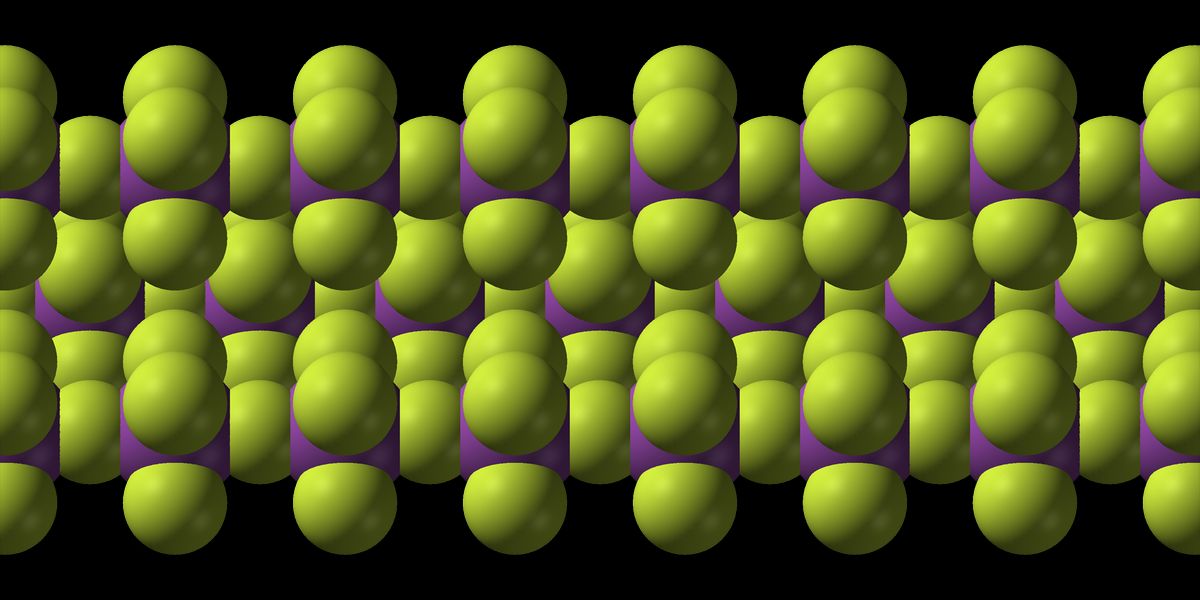
Bismuth Pentafluoride might sound like a mouthful, but this compound holds some pretty cool secrets. Ever wondered what makes it special? Bismuth Pentafluoride (BiF5) is a chemical compound with unique properties that set it apart from other substances. It's known for its strong oxidizing abilities, making it a powerful player in various chemical reactions. This compound is also quite rare and not something you’d find in everyday life. Scientists and chemists often study it to understand its behavior and potential uses. Ready to dive into some intriguing facts about this fascinating compound? Let’s get started!
Key Takeaways:
- Bismuth pentafluoride is a unique compound with fascinating properties, including its role as an oxidizing agent and its use in organic chemistry and the nuclear industry.
- Handling bismuth pentafluoride requires caution due to its reactivity and toxicity, making protective gear and proper storage essential for safety.
What is Bismuth Pentafluoride?
Bismuth pentafluoride (BiF5) is a chemical compound with some fascinating properties. It’s not something you come across every day, but it has some interesting uses and characteristics. Let's dive into some facts about this unique compound.
Basic Properties of Bismuth Pentafluoride
Understanding the basic properties of bismuth pentafluoride helps us appreciate its uniqueness.
- Chemical Formula: The chemical formula for bismuth pentafluoride is BiF5.
- Molecular Weight: It has a molecular weight of approximately 303.97 g/mol.
- Appearance: Bismuth pentafluoride appears as a white crystalline solid.
- Density: The density of BiF5 is about 5.32 g/cm³.
- Melting Point: It has a melting point of around 100°C (212°F).
- Boiling Point: The boiling point of bismuth pentafluoride is approximately 230°C (446°F).
Chemical Behavior of Bismuth Pentafluoride
Bismuth pentafluoride exhibits some intriguing chemical behaviors.
- Oxidizing Agent: BiF5 is a strong oxidizing agent, meaning it can easily accept electrons from other substances.
- Reactivity with Water: It reacts vigorously with water, producing bismuth oxyfluoride and hydrofluoric acid.
- Reactivity with Metals: Bismuth pentafluoride reacts with many metals, often forming metal fluorides.
- Stability: It is stable under normal conditions but decomposes when heated to high temperatures.
Uses of Bismuth Pentafluoride
Despite its reactivity, bismuth pentafluoride has several practical applications.
- Fluorinating Agent: It is used as a fluorinating agent in organic chemistry.
- Catalyst: BiF5 can act as a catalyst in certain chemical reactions.
- Material Science: It is used in the synthesis of other bismuth compounds and materials.
- Nuclear Industry: Bismuth pentafluoride is sometimes used in the nuclear industry for its unique properties.
Safety and Handling of Bismuth Pentafluoride
Handling bismuth pentafluoride requires caution due to its reactive nature.
- Toxicity: BiF5 is toxic and can cause severe burns if it comes into contact with skin.
- Protective Gear: Handling this compound requires protective gear, including gloves and eye protection.
- Storage: It should be stored in a cool, dry place away from moisture and incompatible substances.
- First Aid: In case of exposure, immediate medical attention is necessary.
Interesting Facts about Bismuth Pentafluoride
Here are some lesser-known but intriguing facts about bismuth pentafluoride.
- Discovery: Bismuth pentafluoride was first synthesized in the early 20th century.
- Crystal Structure: It has a unique crystal structure that contributes to its properties.
- Research: Ongoing research explores its potential uses in various fields, including medicine and electronics.
- Environmental Impact: Due to its reactivity, it must be handled carefully to avoid environmental contamination.
- Synthesis: It can be synthesized by reacting bismuth trioxide with fluorine gas.
- Decomposition: When decomposed, it releases toxic fluorine gas.
- Unique Bonding: The bonding in BiF5 is quite complex, involving multiple fluorine atoms bonded to a single bismuth atom.
The Final Word on Bismuth Pentafluoride
Bismuth pentafluoride is a fascinating compound with unique properties. Its high reactivity and strong oxidizing ability make it valuable in various chemical reactions. Despite its toxicity, careful handling allows scientists to harness its potential. This compound's distinctive structure and behavior continue to intrigue researchers, leading to ongoing studies and discoveries. Understanding bismuth pentafluoride not only broadens our knowledge of chemistry but also opens doors to new applications in industry and research. Whether you're a student, a professional, or just curious, learning about bismuth pentafluoride offers a glimpse into the complex and captivating world of chemical compounds. So, next time you hear about bismuth pentafluoride, you'll know it's more than just a name—it's a key player in the realm of chemistry.
Frequently Asked Questions
Was this page helpful?
Our commitment to delivering trustworthy and engaging content is at the heart of what we do. Each fact on our site is contributed by real users like you, bringing a wealth of diverse insights and information. To ensure the highest standards of accuracy and reliability, our dedicated editors meticulously review each submission. This process guarantees that the facts we share are not only fascinating but also credible. Trust in our commitment to quality and authenticity as you explore and learn with us.
